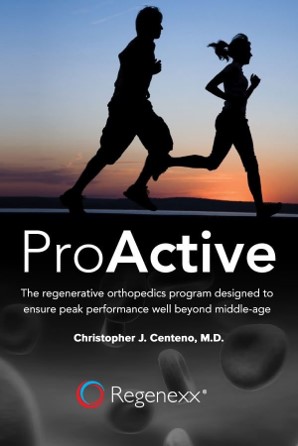What Is Senescence? Why Is It Important?

Credit: Shutterstock
We all get old. That’s a physical law like gravity. However, some of us do it better than others. Much of that has to do with senescence. What is that and why should you care? Let’s dig in.
What Is Senescence?
Your body is made up of cells. Those cells eventually get old and die. In fact, almost all of your cells outside your brain and nerves replace themselves every 7-10 years. That includes your bones. So you’re already largely a clone of yourself many times over.
The rate at which those cells die is pretty critical for how we age. If they die on time and live a full and useful life, stem cells in all of your tissues replace the dead ones. If they die too quickly, you can get behind the curve of replacing those dead cells.
When a cell dies or can no longer divide that’s called senescence. The mere act of cell death causes a local inflammatory response as the contents of the cell spill out all over the place. Too many senescent cells mean lots of extra inflammation and sensitized immune cells (1). We know that chronic inflammation is one of the key problems that can lead to early disability and death (2). Hence, trying to reduce the number of dying cells in your body is likely a worthy endevor.
If Cell Senescence Is Bad, How Can You Help It?
For anybody undergoing an Orthobiologics procedure that uses their own platelets or stem cells, reducing the number of senescent cells is probably a good thing. What would a program designed to minimize cellular senescence look like? Let’s explore what I do every day.
How do I manage my own cellular senescence? Here’s my personal program:
- Supplements: These are natural anti-inflammatories as well that I take every morning that likely have senolytic properties (i.e. reduce senescence).
- Medications:
- Sermorilin (5)-This is an injectable that prompts the pituitary to release growth hormone, which is what keeps us young.
- Metformin (6)-A blood sugar control drug that also helps clear and reduce the number of senescent cells.
- Diet
- Weight loss (7)-You may notice that I’ve lost some pounds recently which is largely due to being on an extended version of the CLEAN Program. Just losing weight can reduce the senescence in your cells.
- Blood sugar control (8)-Staying away from high carb or sugar items and Metformin. Why? Because we know that type II diabetics have more cellular senescence and die earlier than their peers.
- Exercise (9)-Yep, something as simple as making sure you exercise at least 6 days a week can reduce cell death in your body.
ProActive
I wrote a whole book on how to be that person who is still kicking it as they age. If you’re interested in this subject, click on the book cover below to download your own copy:
The upshot? Having too many dying cells is a bad thing. However, you can probably control or at least mitigate your cellular senescence with a little work. So ask your physician what that looks like for you!
______________________________________________
References:
(1) Newton K, Dixit VM, Kayagaki N. Dying cells fan the flames of inflammation. Science. 2021 Nov 26;374(6571):1076-1080. doi: 10.1126/science.abi5934. Epub 2021 Nov 25. PMID: 34822265.
(2) Furman D, Campisi J, Verdin E, Carrera-Bastos P, Targ S, Franceschi C, Ferrucci L, Gilroy DW, Fasano A, Miller GW, Miller AH, Mantovani A, Weyand CM, Barzilai N, Goronzy JJ, Rando TA, Effros RB, Lucia A, Kleinstreuer N, Slavich GM. Chronic inflammation in the etiology of disease across the life span. Nat Med. 2019 Dec;25(12):1822-1832. doi: 10.1038/s41591-019-0675-0. Epub 2019 Dec 5. PMID: 31806905; PMCID: PMC7147972.
(3) Bielak-Zmijewska A, Grabowska W, Ciolko A, et al. The Role of Curcumin in the Modulation of Ageing. Int J Mol Sci. 2019;20(5):1239. Published 2019 Mar 12. doi:10.3390/ijms20051239
(4) Mária J, Ingrid Ž. Effects of bioactive compounds on senescence and components of senescence associated secretory phenotypes in vitro. Food Funct. 2017 Jul 19;8(7):2394-2418. doi: 10.1039/c7fo00161d. PMID: 28665427.
(5) Walker RF. Sermorelin: a better approach to management of adult-onset growth hormone insufficiency?. Clin Interv Aging. 2006;1(4):307-308. doi:10.2147/ciia.2006.1.4.307
(6) Moiseeva O, Deschênes-Simard X, St-Germain E, Igelmann S, Huot G, Cadar AE, Bourdeau V, Pollak MN, Ferbeyre G. Metformin inhibits the senescence-associated secretory phenotype by interfering with IKK/NF-κB activation. Aging Cell. 2013 Jun;12(3):489-98. doi: 10.1111/acel.12075. Epub 2013 Apr 23. PMID: 23521863.
(7) Maduro AT, Luís C, Soares R. Ageing, cellular senescence and the impact of diet: an overview. Porto Biomed J. 2021;6(1):e120. Published 2021 Feb 11. doi:10.1097/j.pbj.0000000000000120
(8) Narasimhan A, Flores RR, Robbins PD, Niedernhofer LJ. Role of Cellular Senescence in Type II Diabetes. Endocrinology. 2021 Oct 1;162(10):bqab136. doi: 10.1210/endocr/bqab136. PMID: 34363464; PMCID: PMC8386762.
(9) Schafer MJ, White TA, Evans G, Tonne JM, Verzosa GC, Stout MB, Mazula DL, Palmer AK, Baker DJ, Jensen MD, Torbenson MS, Miller JD, Ikeda Y, Tchkonia T, van Deursen JM, Kirkland JL, LeBrasseur NK. Exercise Prevents Diet-Induced Cellular Senescence in Adipose Tissue. Diabetes. 2016 Jun;65(6):1606-15. doi: 10.2337/db15-0291. Epub 2016 Mar 16. PMID: 26983960; PMCID: PMC4878429.

NOTE: This blog post provides general information to help the reader better understand regenerative medicine, musculoskeletal health, and related subjects. All content provided in this blog, website, or any linked materials, including text, graphics, images, patient profiles, outcomes, and information, are not intended and should not be considered or used as a substitute for medical advice, diagnosis, or treatment. Please always consult with a professional and certified healthcare provider to discuss if a treatment is right for you.

